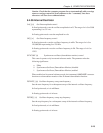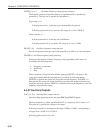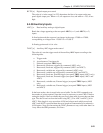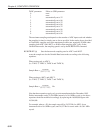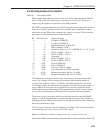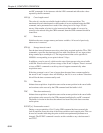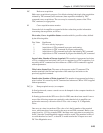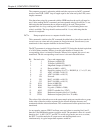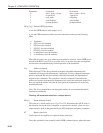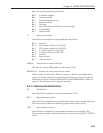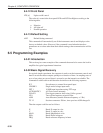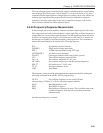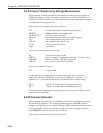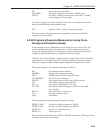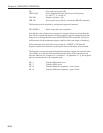
6-27
Chapter 6, COMPUTER OPERATION
<X output value
1
><delim><Magnitude value
1
><term>
<X output value
2
><delim><Magnitude value
2
><term>
<X output value
3
><delim><Magnitude value
3
><term>
<X output value
4
><delim><Magnitude value
4
><term>
<X output value
5
><delim><Magnitude value
5
><term>
etc, where <delim> and <term> are the delimiter and terminator characters
respectively.
The computer program’s subroutine which reads the responses to the DCT command
needs to run a FOR...NEXT loop of length equal to the value set by the LEN (curve
length) command, and must be able to separate the responses on each line for storage
or processing.
Note that when using this command with the GPIB interface the serial poll must be
used. After sending the DCT command, perform repeated serial polls until bit 7 is set,
indicating that the instrument has an output waiting to be read. Then perform
repeated reads in a loop, waiting each time until bit 7 is set indicating that a new
value is available. The loop should continue until bit 1 is set, indicating that the
transfer is completed.
6.4.10 Computer Interfaces (RS232 and GPIB)
RS [n
1
[n
2
]] Set/read RS232 interface parameters
The values of n
1
set the baud rate of the RS232 interface according to the following
table:
n
1
Baud rate (bits per second)
075
1 110
2 134.5
3 150
4 300
5 600
6 1200
7 1800
8 2000
9 2400
10 4800
11 9600
12 19200
The lowest five bits in n
2
control the other RS232 parameters according to the
following table:



